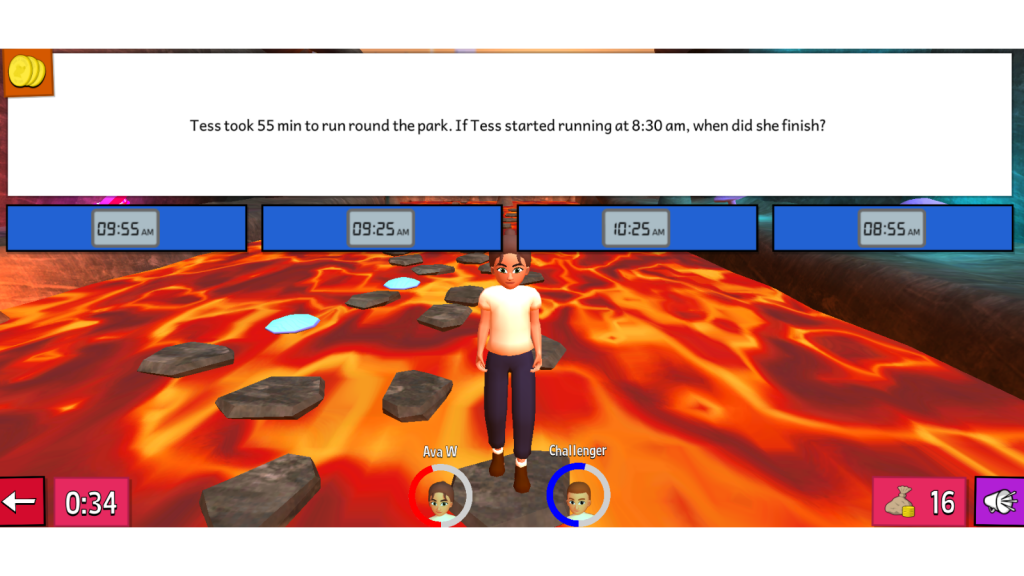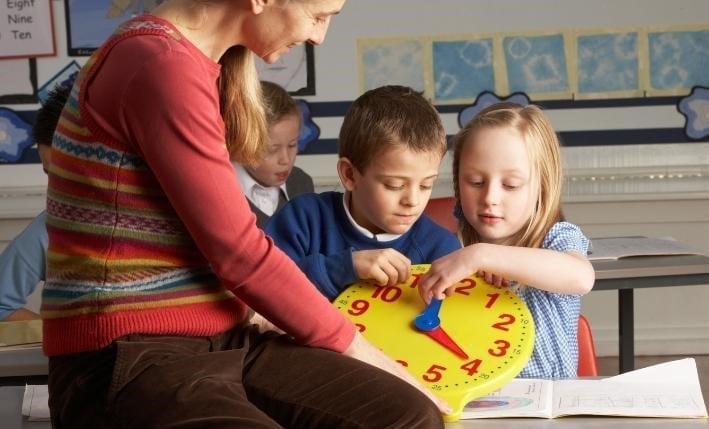Recognised as being both difficult to teach and to learn – maths is a complex subject that encompasses a wide variety of different topics. Despite this, it is nonetheless a hugely important skill to master and remains a fundamental pillar of children’s education.
Noted by the UK government, maths is ‘the language we use to find patterns and understand the world around us. […] Maths is essential to everyday life, critical to science, technology and engineering as well as being fundamental for most jobs’. Thus, ensuring that children are both focused and engaged in maths lessons is hugely important in preparing them for the future.
____________________
How Sumdog can help with everyday maths
At Sumdog, we aim to make learning maths as fun and engaging as possible using gamification. Our maths questions are curriculum-aligned and span a range of relevant topics including time management, money handling and interpreting data to support children in learning to deal with real-world issues.
As children learn, it’s important to ensure that they understand just how much maths is required in everyday life. Whether it be preparing a meal, going to the supermarket or planning a trip – we rely on our maths skills to help us through the day. In order to demonstrate this, Sumdog uses real-life scenario questions that appear as children play games.
____________________
Time management
- Our time management questions begin at Early Level with matching pictures of an analog/digital clock to the time written in words and understanding how routines and events are linked with times and seasons such as days of the week and what day was yesterday/what day is tomorrow.
- At First Level, the questions cover identifying the number of minutes in a quarter/half/one hour, reading analog and digital clocks to 15/30 minute accuracy, using a calendar and measuring the time taken to complete different activities.
- Second Level focuses on reading analog and digital clocks to 1/5 minute accuracy, matching pictures of analog and digital clocks, using 24 hour clock timetables, comprehending schedules using 24 hour time, calculating past/future time, converting 12 hour to 24 hour time and recording time for short/long durations and estimating journey lengths.
- Third Level covers calculating elapsed time, converting time into fractions and decimal fractions, using the speed, distance and time formula to calculate speed/distance/time, adding and subtracting durations and calculating relative sizes of time units (day/week/month/year/decade/century/millennium).
____________________
Money handling
- Our money handling questions begin at Early Level with understanding how money is used, recognising different coins and basic adding and subtracting of money up to 20p.
- First Level covers paying for items and working out change, matching and comparing coins up to 50p, calculating money up to £2 and understanding digital payment methods.
- Second Level looks at money comparison and conversion up to £5, adding and subtracting mixed amounts of money, choosing costs options on the basis of affordability, calculating profit, loss and interest and understanding implications of different payment methods.
- Third Level covers converting GBP into different currencies and understanding complex financial terms such as loan APR, savings interest rates and monthly direct debts.
____________________
Interpreting data
- Our interpreting data questions begin at Early Level with reading picture graphs of values up to 5/10, calculating differences in tables and picture graphs within 10, reading tally charts of values up to 20 and comparing values in a table using ‘more than’ or ‘less than’.
- First Level questions look at calculating with tables and graphs with values up to 100, reading values in frequency tables and line graphs, comparing values in different types of graphs and identifying the largest and smallest values in lists of data.
- At Second Level, questions cover understanding statistical questions, identifying a bad data sample, reading pictographs, comparing pictographs and calculating scaled bar graphs with values up to 100.
- Third Level questions focus on calculating the values on graphs up to 200, analysing data to make predictions, reading and interpreting complex graphs, identifying the best data sample, identifying proportions, understanding and using measures of central tendency (median/mode/range), identifying dot and box plots, interpreting gradients, introduction to function and recognising slope and y-intercept.
As children continue to play on Sumdog they will progress through their school’s curriculum at their own working level. Teachers also have the ability to set personalised assessments for their entire class, small groups or individual pupils in order to target certain problem areas or to revise skills they have already learned.
____________________
How can Sumdog support my teaching of everyday maths?
With over 30 games for children to choose from, Sumdog’s adaptive learning platform is a great way to support pupils’ learning of everyday maths – why not try it out in your classroom?



